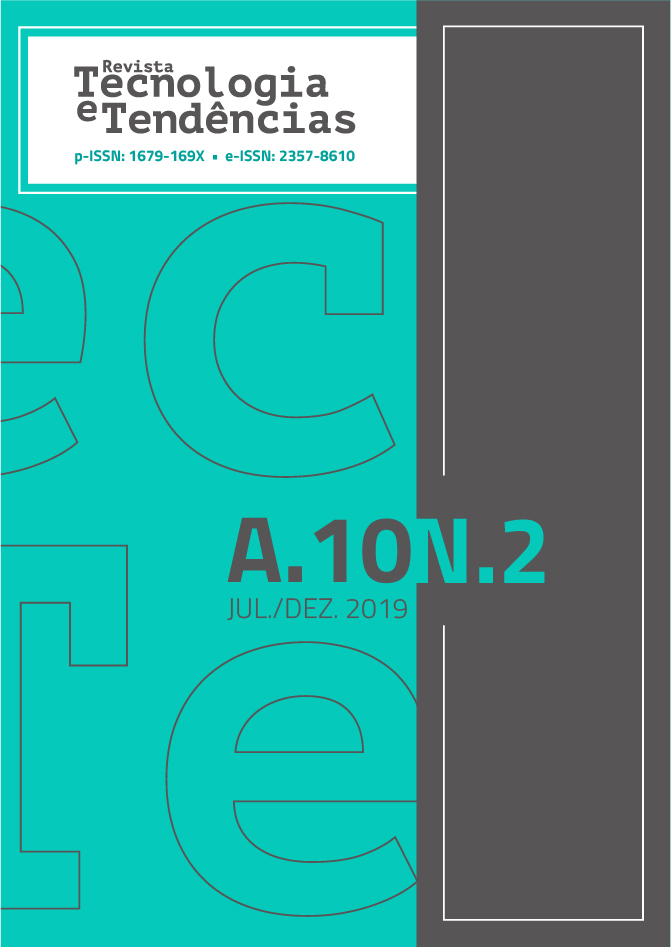ANÁLISE COMPARATIVA ENTRE ESTAÇÕES COMPACTAS E CONVENCIONAIS PARA O TRATAMENTO DE EFLUENTES NO MUNICÍPIO DE DOIS IRMÃOS, RS
DOI:
https://doi.org/10.25112/rtt.v10i2.1980Resumo
No Brasil, apenas uma pequena parcela do esgoto gerado pelas cidades é devidamente tratado em estações de tratamento de efluentes . O uso de soluções individuais (fossa séptica e sumidouro) é empregado em parte do esgoto gerado, e aproximadamente um terço do esgoto doméstico não possui coleta, tampouco tratamento. O presente estudo foi desenvolvido no município de Dois Irmãos, no Rio Grande do Sul. O município avaliado encontra-se em crescimento, com a implantação prevista de novos condomínios residenciais. Desta forma, o uso de estações compactas para o tratamento de efluentes líquidos foi avaliado, verificando sua eficiência e viabilidade econômica, em comparação com a tecnologia de fossa séptica e filtro anaeróbio coletivos, convencionalmente utilizada pelo município (estação de tratamento convencional). O trabalho mostra de forma comparativa, os custos de implantação, operação e manutenção, além de trazer as informações sobre a eficiência dos sistemas de tratamento de efluentes, quais sejam estação de tratamento compacta e estação de tratamento convencional. A questão mais relevante quando se compara os dois sistemas é a diferença no custo de implantação, onde o sistema compacto analisado seria até 81,22% mais econômico do que o convencional. Além da questão econômica, a eficiência do sistema compacto mostra-se superior ao sistema convencional. A estação compacta apresentou 97,97% de remoção de demanda bioquímica de oxigênio, enquanto a estação convencional removeu 77,67% do mesmo parâmetro.
Palavras-chave: Estação de Tratamento de Efluente. ETE Compacta. ETE Convencional.
ABSTRACT
In Brazil, only a small portion of the sewage generated by the cities is properly treated in wastewater treatment plants. The use of individual solutions (septic tank and sump) is used in part of the generated sewage, and approximately one-third of the domestic sewage has no collection or treatment. The present study was developed in the city of Dois Irmãos, Rio Grande do Sul. The evaluated municipality is growing, with the expected implementation of new residential condominiums. Thus, the use of compact stations for the treatment of liquid effluents was evaluated, verifying their efficiency and economic viability, in comparison with the technology of collective septic tank and anaerobic filter, conventionally used by the municipality (conventional treatment station). The work compares the implementation, operation and maintenance costs, as well as information on the efficiency of wastewater treatment systems (compact treatment plant and conventional treatment plant). The most relevant issue when comparing the two systems is the difference in deployment cost, where the compact system analyzed would be up to 81.22% more economical than the conventional one. Besides the economic issue, the efficiency of the compact system is superior to the conventional system. The compact station showed 97.97% of biochemical oxygen demand removal, while the conventional station removed 77.67% of the same parameter.
Keywords: Effluent Treatment Station. Compact STE. Conventional STE.
Downloads
Publicado
Edição
Seção
Licença
• Os autores mantêm os direitos autorais e concedem à revista o direito de primeira publicação com o trabalho licenciado sob a Licença Creative Commons - Attribution 4.0 International (CC BY 4.0).
• Os autores são estimulados a publicar e distribuir seu trabalho online (ex.: em repositórios institucionais ou na sua página pessoal), pois isso pode aumentar o impacto e a citação do trabalho publicado.
--------------------------------------------------------------------------------------------------------------------------------
• The authors retain the copyright and grant the magazine the right of first publication with the work licensed under the Licença Creative Commons - Attribution 4.0 International (CC BY 4.0).
• Authors are encouraged to publish and distribute their work online (eg in institutional repositories or on their personal page), as this may increase the impact and citation of the published work.

